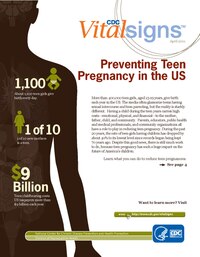
Photo from wikipedia
BackgroundThe consequences of teenage childbearing on the health of mothers and children, and on girls schooling have been documented in many studies. The objectives of this study are to: 1)… Click to show full abstract
BackgroundThe consequences of teenage childbearing on the health of mothers and children, and on girls schooling have been documented in many studies. The objectives of this study are to: 1) examine trends and differentials in teenage motherhood in Cameroon, with a distinction between premarital and marital teenage pregnancy; and 2) investigate trends and differentials in the length of time to marriage following a premarital teenage pregnancy. MethodsWe use data from five demographic and health surveys (DHS) conducted in Cameroon between 1991 and 2018. Teenage pregnancy, defined as first pregnancy occurring before the age of 20 years, is recode as a trichotomous variable (0 = No teenage pregnancy; 1 = marital teenage pregnancy; 2 = premarital teenage pregnancy). Time from first premarital teenage pregnancy to first marriage is analyzed as a continuous variable. ResultsThe percentage of women who experienced a marital teenage pregnancy declined from 39.6% to 26.4% between 1991 and 2018. After an initial drop between 1991 and 2004, premarital teenage pregnancy stabilized at about 25%. Women with intermediate levels of schooling were more likely to experience a premarital pregnancy than those with no schooling or higher secondary/tertiary education. The median length of time to first marriage following a premarital teenage pregnancy rose from 16 months in 1991 to 45 months in 2018. Further analysis suggests that marriage may be a more severe barrier to continued schooling than motherhood and that the desire to continue schooling is an important reason for postponing marriage for women who have given birth. Conclusion and recommendationsBesides strengthening interventions to curb adolescent pregnancy, efforts should be made to support families, communities and schools to help adolescent mothers return to school, prevent future unintended pregnancies, and delay further family formation. Accessibility to youth-friendly FP/RH services should be addressed.
Journal Title: PLOS ONE
Year Published: 2022
Link to full text (if available)
Share on Social Media: Sign Up to like & get
recommendations!